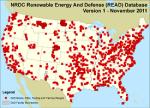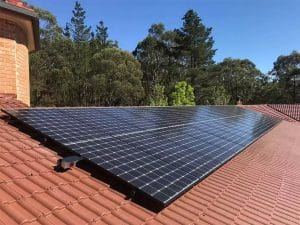Just days after we reported on a new solar mapping tool from NASA that measures the potential energy yield from solar power systems based on the Earth’s topography, comes news from the U.S Department of Defense (DoD) of yet another planning resource for the renewable energy sector.
The project is designed to help site large-scale renewable energy projects where they won’t interfere with military activities or environmentally sensitive areas.
Working in partnership with the National Resources Defense Council (NRDC), the two bodies have created the “Renewable Energy and Defense Database,” (READ) which uses geospatial data to highlight Defense Department bases, flight paths and landing zones, test sites and other DoD activities; plus any potential environmental conflicts.
According to DoD spokesman, Frank C. DiGiovanni, the READ database represents a “quantum leap” in renewable energy planning tools, allowing developers to go online and simply enter geographic coordinates of possible projects sites, eliminating conflicts with military and public zoning early in the planning process.
“This is, for the first time, a really good, comprehensive look at all these different intersecting interests,” DiGiovanni said. “With this tool, a developer can greatly minimize the chance that they will have some compatibility issues with DOD or from an environmental perspective.”
The NRDC used information gathered from the Federal Aviation Administration, National Oceanic and Atmospheric Administration, National Park Service and other sources to create the READ mapping tool, which also shows environmentally sensitive areas and designated wilderness environment areas, national monuments and areas without roads.
Energy has become a matter of national security in the USA and for many, renewable energy sources such as large-scale wind and solar power projects are bridging the gap between imports of foreign oil and domestic fossil fuel generation.
The READ database is available through the NRDC website.







































